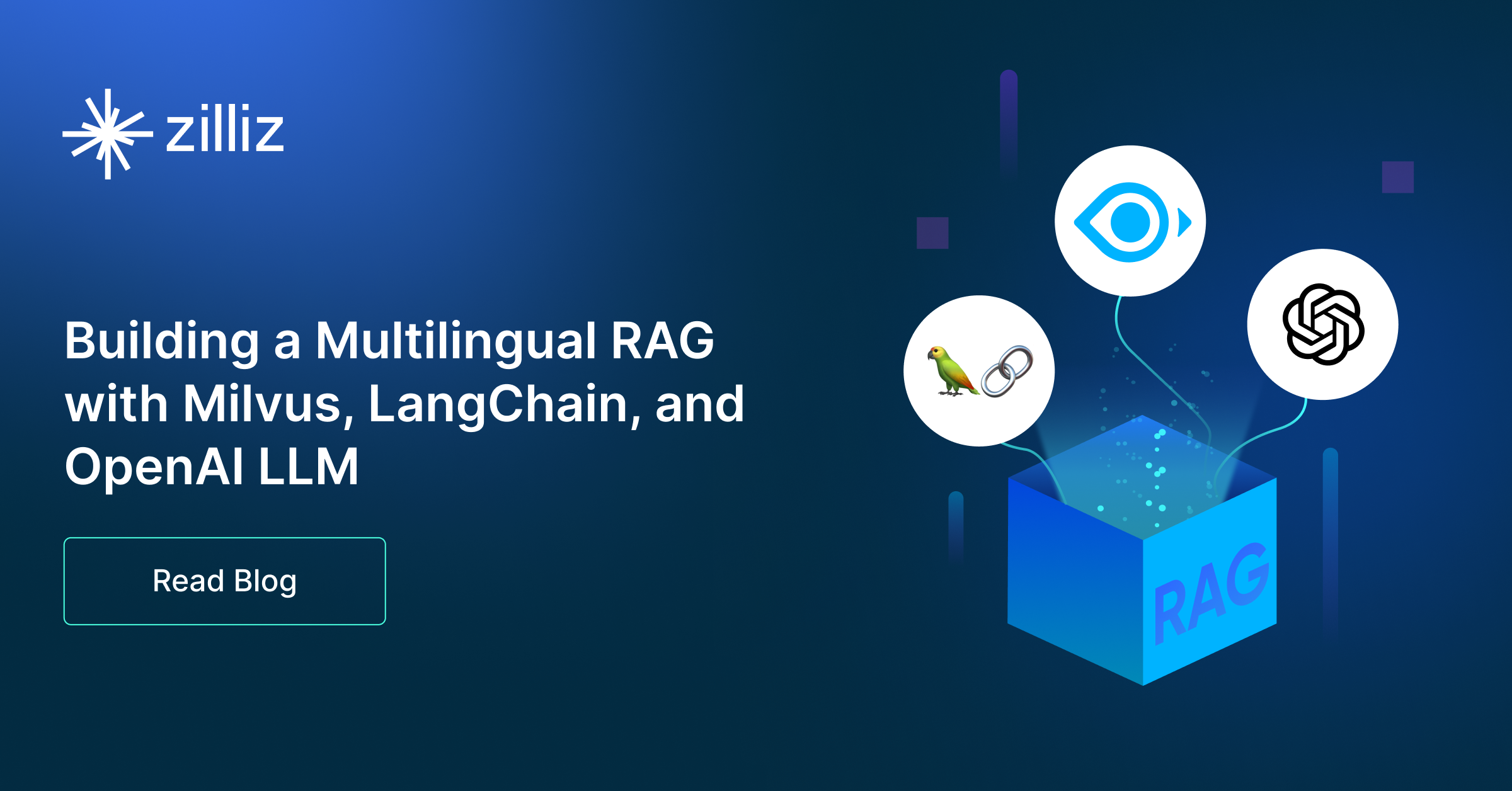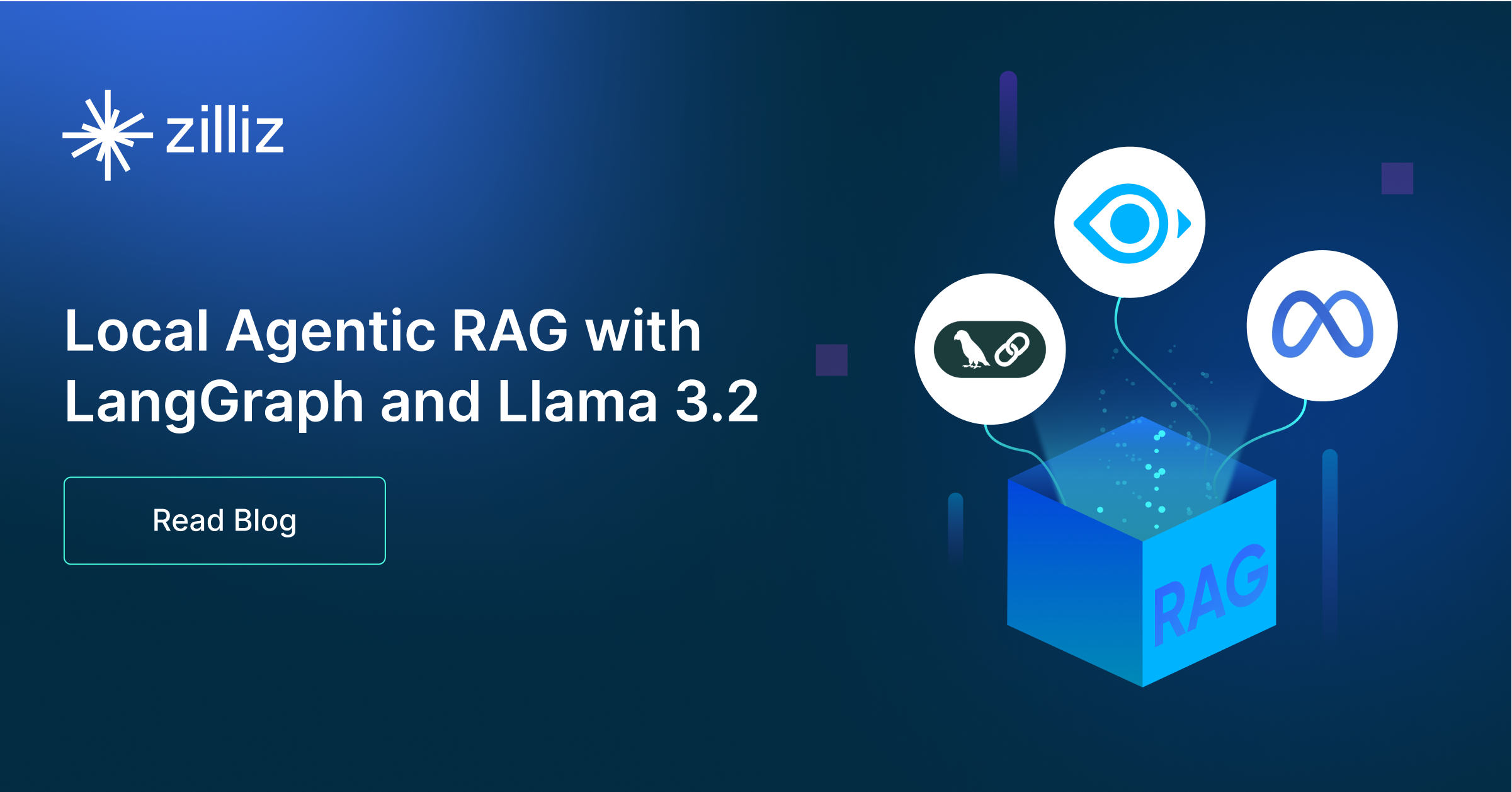Build RAG Chatbot with Llamaindex, OpenSearch, Jamba Large, and voyage-3
Introduction to RAG
Retrieval-Augmented Generation (RAG) is a game-changer for GenAI applications, especially in conversational AI. It combines the power of pre-trained large language models (LLMs) like OpenAI’s GPT with external knowledge sources stored in vector databases such as Milvus and Zilliz Cloud, allowing for more accurate, contextually relevant, and up-to-date response generation. A RAG pipeline usually consists of four basic components: a vector database, an embedding model, an LLM, and a framework.
Key Components We'll Use for This RAG Chatbot
This tutorial shows you how to build a simple RAG chatbot in Python using the following components:
- Llamaindex: a data framework that connects large language models (LLMs) with various data sources, enabling efficient retrieval-augmented generation (RAG). It helps structure, index, and query private or external data, optimizing LLM applications for search, chatbots, and analytics.
- OpenSearch: An open-source search and analytics suite derived from Elasticsearch. It offers robust full-text search and real-time analytics, with vector search available as an add-on for similarity-based queries, extending its capabilities to handle high-dimensional data. Since it is just a vector search add-on rather than a purpose-built vector database, it lacks scalability and availability and many other advanced features required by enterprise-level applications. Therefore, if you prefer a much more scalable solution or hate to manage your own infrastructure, we recommend using Zilliz Cloud, which is a fully managed vector database service built on the open-source Milvus and offers a free tier supporting up to 1 million vectors.)
- Jamba Large: Jamba Large is a robust language model built for high-performance tasks requiring deep contextual understanding. It offers strong capabilities in generating complex responses and handling intricate queries, making it ideal for advanced applications like virtual assistants, content creation, and conversational AI in enterprise solutions.
- Voyage-3: Designed for AI-powered navigation and journey planning, Voyage-3 optimizes route efficiency while providing real-time traffic updates and data insights. Its strengths lie in predictive analysis and adaptive learning, making it ideal for logistics, delivery services, and travel apps that demand reliable and intelligent navigation solutions.
By the end of this tutorial, you’ll have a functional chatbot capable of answering questions based on a custom knowledge base.
Note: Since we may use proprietary models in our tutorials, make sure you have the required API key beforehand.
Step 1: Install and Set Up Llamaindex
pip install llama-index
Step 2: Install and Set Up Jamba Large
%pip install llama-index-llms-ai21
from llama_index.llms.ai21 import AI21
llm = AI21(
model="jamba-large", api_key=api_key, max_tokens=100, temperature=0.5
)
Step 3: Install and Set Up voyage-3
%pip install llama-index-embeddings-voyageai
from llama_index.embeddings.voyageai import VoyageEmbedding
embed_model = VoyageEmbedding(
voyage_api_key="",
model_name="voyage-3",
)
Step 4: Install and Set Up OpenSearch
%pip install llama-index-vector-stores-opensearch
from os import getenv
from llama_index.core import SimpleDirectoryReader
from llama_index.vector_stores.opensearch import (
OpensearchVectorStore,
OpensearchVectorClient,
)
from llama_index.core import VectorStoreIndex, StorageContext
# http endpoint for your cluster (opensearch required for vector index usage)
endpoint = getenv("OPENSEARCH_ENDPOINT", "http://localhost:9200")
# index to demonstrate the VectorStore impl
idx = getenv("OPENSEARCH_INDEX", "gpt-index-demo")
# OpensearchVectorClient stores text in this field by default
text_field = "content"
# OpensearchVectorClient stores embeddings in this field by default
embedding_field = "embedding"
# OpensearchVectorClient encapsulates logic for a
# single opensearch index with vector search enabled
client = OpensearchVectorClient(
endpoint, idx, 1536, embedding_field=embedding_field, text_field=text_field
)
# initialize vector store
vector_store = OpensearchVectorStore(client)
Step 5: Build a RAG Chatbot
Now that you’ve set up all components, let’s start to build a simple chatbot. We’ll use the Milvus introduction doc as a private knowledge base. You can replace it with your own dataset to customize your RAG chatbot.
import requests
from llama_index.core import SimpleDirectoryReader
# load documents
url = 'https://raw.githubusercontent.com/milvus-io/milvus-docs/refs/heads/v2.5.x/site/en/about/overview.md'
example_file = 'example_file.md' # You can replace it with your own file paths.
response = requests.get(url)
with open(example_file, 'wb') as f:
f.write(response.content)
documents = SimpleDirectoryReader(
input_files=[example_file]
).load_data()
print("Document ID:", documents[0].doc_id)
storage_context = StorageContext.from_defaults(vector_store=vector_store)
index = VectorStoreIndex.from_documents(
documents, storage_context=storage_context, embed_model=embed_model
)
query_engine = index.as_query_engine(llm=llm)
res = query_engine.query("What is Milvus?") # You can replace it with your own question.
print(res)
Example output
Milvus is a high-performance, highly scalable vector database designed to operate efficiently across various environments, from personal laptops to large-scale distributed systems. It is available as both open-source software and a cloud service. Milvus excels in managing unstructured data by converting it into numerical vectors through embeddings, which facilitates fast and scalable searches and analytics. The database supports a wide range of data types and offers robust data modeling capabilities, allowing users to organize their data effectively. Additionally, Milvus provides multiple deployment options, including a lightweight version for quick prototyping and a distributed version for handling massive data scales.
Optimization Tips
As you build your RAG system, optimization is key to ensuring peak performance and efficiency. While setting up the components is an essential first step, fine-tuning each one will help you create a solution that works even better and scales seamlessly. In this section, we’ll share some practical tips for optimizing all these components, giving you the edge to build smarter, faster, and more responsive RAG applications.
LlamaIndex optimization tips
To optimize LlamaIndex for a Retrieval-Augmented Generation (RAG) setup, structure your data efficiently using hierarchical indices like tree-based or keyword-table indices for faster retrieval. Use embeddings that align with your use case to improve search relevance. Fine-tune chunk sizes to balance context length and retrieval precision. Enable caching for frequently accessed queries to enhance performance. Optimize metadata filtering to reduce unnecessary search space and improve speed. If using vector databases, ensure indexing strategies align with your query patterns. Implement async processing to handle large-scale document ingestion efficiently. Regularly monitor query performance and adjust indexing parameters as needed for optimal results.
OpenSearch optimization tips
To optimize OpenSearch in a Retrieval-Augmented Generation (RAG) setup, fine-tune indexing by enabling efficient mappings and reducing unnecessary stored fields. Use HNSW for vector search to speed up similarity queries while balancing recall and latency with appropriate ef_search and ef_construction values. Leverage shard and replica settings to distribute load effectively, and enable caching for frequent queries. Optimize text-based retrieval with BM25 tuning and custom analyzers for better relevance. Regularly monitor cluster health, index size, and query performance using OpenSearch Dashboards and adjust configurations accordingly.
Jamba Large optimization tips
Optimizing Jamba Large in a RAG setup involves utilizing its advanced capabilities for complex queries and multi-turn conversations. Leverage fine-tuning to improve domain-specific understanding, ensuring that the model can generate more relevant and accurate results. Optimize your retrieval pipeline by using well-structured, concise document chunks that maintain context without overwhelming the model’s input size. Reduce inference time by batching queries when possible and using efficient hardware acceleration, such as GPUs. Experiment with dynamic prompt adjustments to improve response quality, and ensure that document reranking is utilized for highly relevant results during retrieval.
voyage-3 optimization tips
voyage-3 is a versatile model suitable for balanced performance in RAG systems, making efficient retrieval strategies crucial for maintaining low latency and high accuracy. Improve retrieval by leveraging embedding-based similarity search with reranking to ensure relevant context is included. Structure prompts with clear context separation and concise instructions to maximize response accuracy. Set temperature between 0.1 and 0.3 for controlled output while tuning top-k and top-p for flexibility. Implement response caching for frequently queried data to minimize redundant processing and API calls. Utilize parallel processing and request batching to optimize resource efficiency. For multi-model deployments, assign voyage-3 to mid-tier complexity tasks while using larger models for deeper analysis and smaller models for real-time, low-latency queries.
By implementing these tips across your components, you'll be able to enhance the performance and functionality of your RAG system, ensuring it’s optimized for both speed and accuracy. Keep testing, iterating, and refining your setup to stay ahead in the ever-evolving world of AI development.
RAG Cost Calculator: A Free Tool to Calculate Your Cost in Seconds
Estimating the cost of a Retrieval-Augmented Generation (RAG) pipeline involves analyzing expenses across vector storage, compute resources, and API usage. Key cost drivers include vector database queries, embedding generation, and LLM inference.
RAG Cost Calculator is a free tool that quickly estimates the cost of building a RAG pipeline, including chunking, embedding, vector storage/search, and LLM generation. It also helps you identify cost-saving opportunities and achieve up to 10x cost reduction on vector databases with the serverless option.
 Calculate your RAG cost
Calculate your RAG cost
What Have You Learned?
Wow, what a journey we've been on in this tutorial! You've learned how to skillfully integrate a framework like LlamaIndex with a powerful vector database such as OpenSearch, combined with the impressive capabilities of a large language model like Jamba Large, alongside a sophisticated embedding model, to build your very own Retrieval-Augmented Generation (RAG) system. Each component has its role: LlamaIndex helps manage and query your data, OpenSearch efficiently stores and retrieves high-dimensional embeddings, while Jamba Large generates human-like text responses based on the context pulled from your database. And let’s not forget the embedding model that underpins this powerful architecture, converting your data into a form that your system can understand and manipulate.
In addition to mastering these components, you also got some valuable optimization tips and even access to a handy free RAG cost calculator, giving you actionable insights to streamline your system and keep those expenses in check. Now you’re equipped with the tools and knowledge to dive into the exciting world of RAG architectures! So why wait? Start building, optimizing, and innovating your own RAG applications today! The possibilities are endless, and I can’t wait to see what incredible creations you’ll come up with next. Your adventure in enhancing data retrieval and generation has only just begun—let’s make it amazing!
Further Resources
🌟 In addition to this RAG tutorial, unleash your full potential with these incredible resources to level up your RAG skills.
- How to Build a Multimodal RAG | Documentation
- How to Enhance the Performance of Your RAG Pipeline
- Graph RAG with Milvus | Documentation
- How to Evaluate RAG Applications - Zilliz Learn
- Generative AI Resource Hub | Zilliz
We'd Love to Hear What You Think!
We’d love to hear your thoughts! 🌟 Leave your questions or comments below or join our vibrant Milvus Discord community to share your experiences, ask questions, or connect with thousands of AI enthusiasts. Your journey matters to us!
If you like this tutorial, show your support by giving our Milvus GitHub repo a star ⭐—it means the world to us and inspires us to keep creating! 💖
- Introduction to RAG
- Key Components We'll Use for This RAG Chatbot
- Step 1: Install and Set Up Llamaindex
- Step 2: Install and Set Up Jamba Large
- Step 3: Install and Set Up voyage-3
- Step 4: Install and Set Up OpenSearch
- Step 5: Build a RAG Chatbot
- Optimization Tips
- RAG Cost Calculator: A Free Tool to Calculate Your Cost in Seconds
- What Have You Learned?
- Further Resources
- We'd Love to Hear What You Think!
Content
Vector Database at Scale
Zilliz Cloud is a fully-managed vector database built for scale, perfect for your RAG apps.
Try Zilliz Cloud for Free


